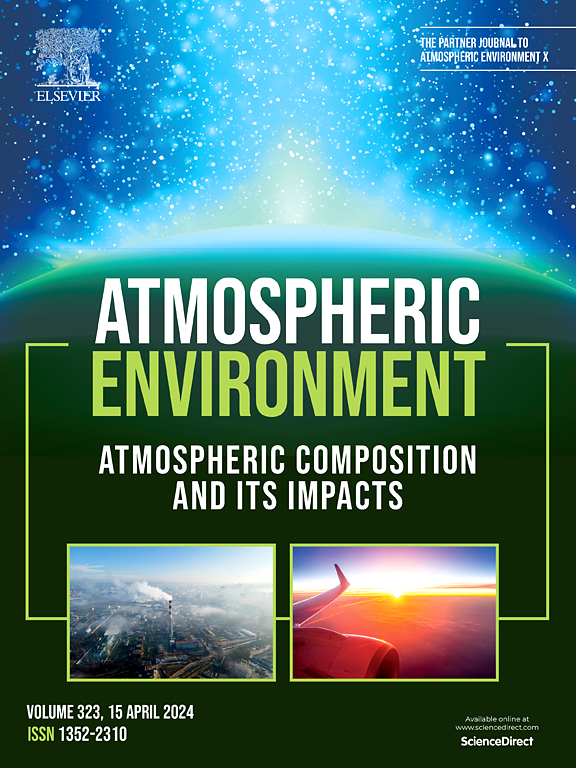Direct sun total NO2 column measurements at Thessaloniki, Greece with two DOAS systems and comparisons with S5P/TROPOMI
IF 4.2
2区 环境科学与生态学
Q2 ENVIRONMENTAL SCIENCES
引用次数: 0
Abstract
Multiple Multi-Axis Differential Optical Absorption Spectroscopy (MAX-DOAS) instruments have been operating in the Laboratory of Atmospheric Physics (LAP), Thessaloniki, Greece over a decade to monitor trace gases in the troposphere. In this work, we present methodology, applied for the first time in LAP for retrieving total NO2 columns in the atmosphere by applying the Direct Sun DOAS technique (DS-DOAS) on solar direct radiance spectra acquired with a research grade MAX-DOAS system, Delta. For the retrieval of total NO2 two spectral fitting methods were tested using cross sections of NO2 at two different temperatures for the tropospheric and the stratospheric component. The method that is based on concurrent spectral DOAS fittings with NO2 cross sections at two temperatures (294 K and 220 K) (2T method) produces results of better quality as compared to the method using NO2 cross section at one 254.5 K (1T method), with latter underestimating the total NO2 vertical column density by up to 15%. This was verified by the good agreement (correlation coefficient R = 0.973) against the total NO2 columns measured by an independently calibrated collocated Pandora system. Finally, the total NO2 columns derived from the Delta instrument were compared with collocated observations by S5P/TROPOMI, showing an underestimation of the latter by up to 40% for days with high NO2 concentrations, while the agreement is better under low NO2 conditions. The overall agreement between the satellite and Delta system observations is characterized by a correlation coefficient of 0.82 and a mean bias of −2.63 ± 2.75 Pmolec/cm2.
求助全文
约1分钟内获得全文
求助全文
来源期刊

Atmospheric Environment
环境科学-环境科学
CiteScore
9.40
自引率
8.00%
发文量
458
审稿时长
53 days
期刊介绍:
Atmospheric Environment has an open access mirror journal Atmospheric Environment: X, sharing the same aims and scope, editorial team, submission system and rigorous peer review.
Atmospheric Environment is the international journal for scientists in different disciplines related to atmospheric composition and its impacts. The journal publishes scientific articles with atmospheric relevance of emissions and depositions of gaseous and particulate compounds, chemical processes and physical effects in the atmosphere, as well as impacts of the changing atmospheric composition on human health, air quality, climate change, and ecosystems.
 求助内容:
求助内容: 应助结果提醒方式:
应助结果提醒方式:


